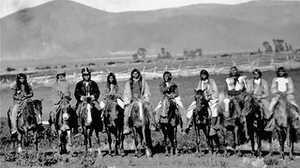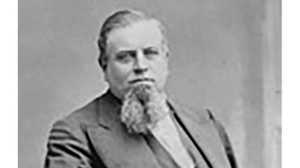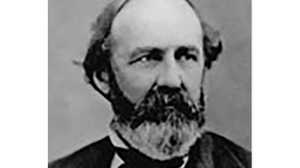Nitroglycerin
Nitroglycerin is an explosive compound formed by the combination of glycerol and nitric and sulfuric acids. It was first synthesized in 1864 by chemist Ascanio Sobrero, who destroyed his notes for fear of the damage his highly unstable discovery might cause. But word got out, and the volatile compound came into use even before 1867, when Alfred Nobel combined nitroglycerin with an absorbent clay to create dynamite, which substantially reduced the dangers of the compound in its purest form.
A Leaking Crate
In 1866, one year before Nobel's discovery, San Francisco had its formal introduction to nitroglycerin. On April 14, freight steamers out of Panama landed a cargo of unmarked crates from Hamburg, three of which were taken by train to the Central Pacific at Dutch Flat. All but one of the rest shipped to local construction suppliers. On April 16 CP builders Charles Crocker and James Harvey Strobridge conducted their first tests of nitroglycerin on the hard rock of the Sierra Nevada, where workers were making excruciatingly slow progress with hand tools and black powder. In San Francisco, a wharf employee noticed that the remaining Hamburg crate was leaking some kind of oil. The offensive package was forwarded to the Wells Fargo office, located downtown at the corner of California and Montgomery streets. After lunch, a group of Wells Fargo employees decided to pry open the box and see what was inside.
Deadly Explosion
The resulting explosion leveled the Wells Fargo office and all surrounding buildings, including the nearby Union Club, which was still serving lunchtime crowds. Fifteen people died, many more were seriously wounded, and strewn among the rubble was the torn evidence of human remains. As San Francisco worked itself into a panic over the unknown, deadly substance, a nitroglycerin sample detonated prematurely on the Central Pacific line, ripping apart six workers. It did not take long for press and public to put two and two together. The railroad came under heavy criticism. It had not been their shipment that detonated but, as reasoning went, it easily might have been — and had Central Pacific crates exploded in transit, the human casualties would have been greater than what Wells Fargo had seen.
Making It to Order
It mattered not to Charles Crocker, who had witnessed nitroglycerin in action. The trouble was getting his hands on more of the stuff. The state had confiscated all private holdings of nitroglycerin following the explosion at Wells Fargo and banned its transportation within California. Then, in early 1867, as Central Pacific workers seemed hopelessly mired in the Summit Tunnel, a British chemist named James Howden walked unannounced into e.B. Crocker's Sacramento office. He declared that he could manufacture nitroglycerin on-site in the mountains, thus allowing the railroad to circumvent the transportation ban. All he needed was the lordly amount of $300 per month and a steady supply of ingredients. Tracking down pure glycerol would be tricky, but the Crockers agreed to give it a try.
Faster, Easier, Better
Howden's recipe practically burned through rock. Nitroglycerin required shallower holes, and fewer of them. Its smoke cleared faster than that of black powder, its debris cleaned up more easily, and it worked in wet rock, where powder did not. Most importantly, it allowed the crews substantial progress. Engineer John Gilliss recalled, "In the headings of the Summit Tunnel the average daily progress with powder was 1.18 feet per day; with nitroglycerin, 1.82 feet, or over 54 percent additional progress. In the bottom of the Summit Tunnel, average daily progress with powder, full gangs, was 2.51 feet; with nitroglycerin, 4.38, or over 74 percent in favor of nitroglycerine." Or, as E. B. Crocker put it, "Nitroglycerine tells."
Unknown Number of Deaths
Gilliss would remember only two accidents with nitroglycerin, and he claimed those would have occurred even if the victims had been using black powder. Another engineer recalled differently, stating that because of their careless use of the unstable compound "many an honest John went to China feet first." However many lives it claimed, once fresh air blew the length of the Summit Tunnel, Charles Crocker decided he'd had enough of nitroglycerin. He terminated use of the dangerous compound along the Central Pacific route.
At the turn of 1869 (when it finally encountered some rock), the Union Pacific, following the example of its competitor, used nitroglycerin to bore through Utah's Echo and Weber Canyons.







